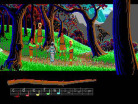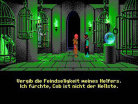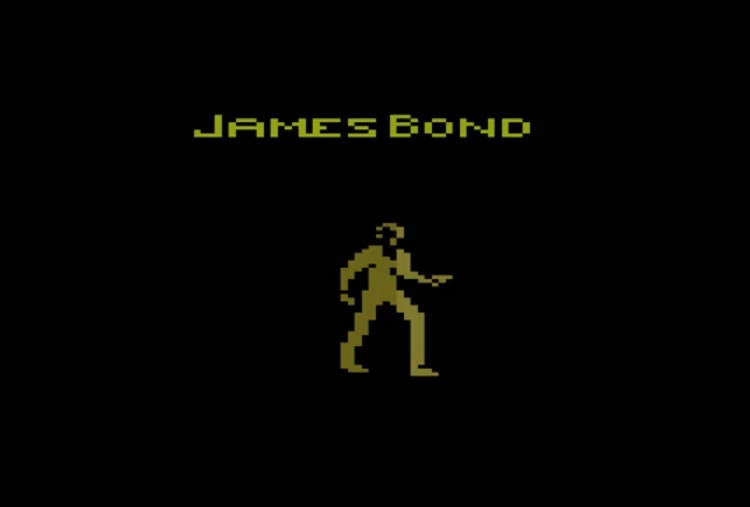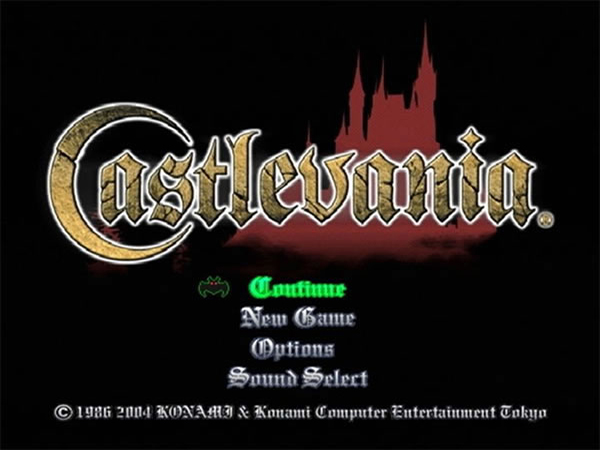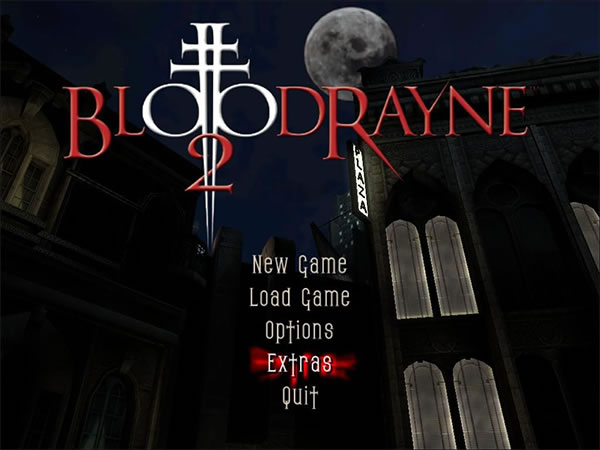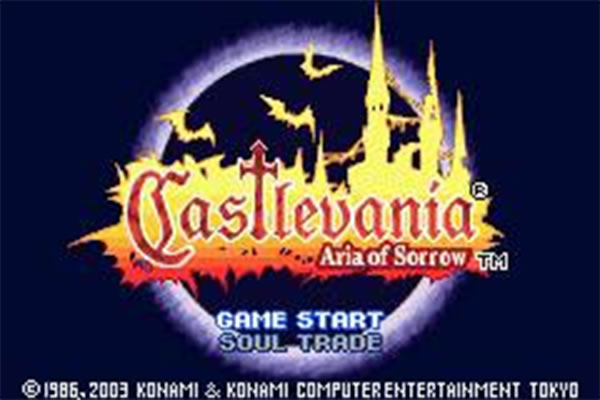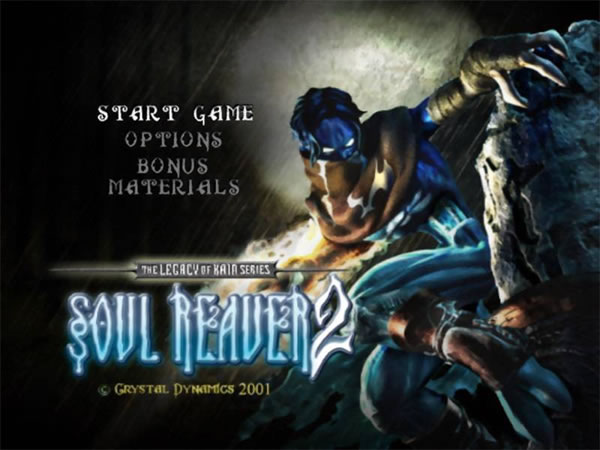- CLASSIC MAGAZINES
- REVIEW CREW
A show recapping what critics thought back
when classic games first came out! - NEXT GENERATION'S BEST & WORST
From the worst 1-star reviews to the best
5-stars can offer, this is Next Generation! - NINTENDO POWER (ARCHIVE)
Experience a variety of shows looking at the
often baffling history of Nintendo Power! - MAGAZINE RETROSPECTIVE
We're looking at the absolutely true history of
some of the most iconic game magazines ever! - SUPER PLAY'S TOP 600
The longest and most ambitious Super NES
countdown on the internet! - THEY SAID WHAT?
Debunking predictions and gossip found
in classic video game magazines! - NEXT GENERATION UNCOVERED
Cyril is back in this spin-off series, featuring the
cover critic review the art of Next Generation! - HARDCORE GAMER MAGAZING (PDF ISSUES)
Download all 36 issues of Hardcore Gamer
Magazine and relive the fun in PDF form!
- REVIEW CREW
- ELECTRONIC GAMING MONTHLY
- ELECTRONIC GAMING MONTHLY RANKS
From Mario to Sonic to Street Fighter, EGM
ranks classic game franchises and consoles! - ELECTRONIC GAMING MONTHLY BEST & WORST
Counting down EGM’s best and worst reviews
going year by year, from 1989 – 2009! - ELECTRONIC GAMING BEST & WORST AWARDS
11-part video series chronicling the ups and
downs of EGM’s Best & Worst Awards!
- ELECTRONIC GAMING MONTHLY RANKS
- GAME HISTORY
- GAME OVER: STORY BREAKDOWNS
Long-running series breaking down game
stories and analyzing their endings! - A BRIEF HISTORY OF GAMING w/ [NAME HERE]
Real history presented in a fun and pithy
format from a variety of game historians! - THE BLACK SHEEP
A series looking back at the black sheep
entries in popular game franchises! - INSTANT EXPERT
Everything you could possibly want to know
about a wide variety of gaming topics! - FREEZE FRAME
When something familiar happens in the games
industry, we're there to take a picture! - I'VE GOT YOUR NUMBER
Learn real video game history through a series
of number-themed episodes, starting at zero! - GREAT MOMENTS IN BAD ACTING
A joyous celebration of some of gaming's
absolute worst voice acting!
- GAME OVER: STORY BREAKDOWNS
- POPULAR SHOWS
- DG NEWS w/ LORNE RISELEY
Newsman Lorne Riseley hosts a regular
series looking at the hottest gaming news! - REVIEW REWIND
Cyril replays a game he reviewed 10+ years
ago to see if he got it right or wrong! - ON-RUNNING FEUDS
Defunct Games' longest-running show, with
editorials, observations and other fun oddities! - DEFUNCT GAMES QUIZ (ARCHIVE)
From online quizzes to game shows, we're
putting your video game knowledge to the test!- QUIZ: ONLINE PASS
Take a weekly quiz to see how well you know
the news and current gaming events! - QUIZ: KNOW THE GAME
One-on-one quiz show where contestants
find out if they actually know classic games! - QUIZ: THE LEADERBOARD
Can you guess the game based on the classic
review? Find out with The Leaderboard!
- QUIZ: ONLINE PASS
- DEFUNCT GAMES VS.
Cyril and the Defunct Games staff isn't afraid
to choose their favorite games and more! - CYRIL READS WORLDS OF POWER
Defunct Games recreates classic game
novelizations through the audio book format!
- DG NEWS w/ LORNE RISELEY
- COMEDY
- GAME EXPECTANCY
How long will your favorite hero live? We crunch
the numbers in this series about dying! - VIDEO GAME ADVICE
Famous game characters answer real personal
advice questions with a humorous slant! - FAKE GAMES: GUERILLA SCRAPBOOK
A long-running series about fake games and
the people who love them (covers included)! - WORST GAME EVER
A contest that attempts to create the worst
video game ever made, complete with covers! - LEVEL 1 STORIES
Literature based on the first stages of some
of your favorite classic video games! - THE COVER CRITIC
One of Defunct Games' earliest shows, Cover
Critic digs up some of the worst box art ever! - COMMERCIAL BREAK
Take a trip through some of the best and
worst video game advertisements of all time! - COMIC BOOK MODS
You've never seen comics like this before.
A curious mix of rewritten video game comics!
- GAME EXPECTANCY
- SERIES ARCHIVE
- NINTENDO SWITCH ONLINE ARCHIVE
A regularly-updated list of every Nintendo
Switch Online release, plus links to review! - PLAYSTATION PLUS CLASSIC ARCHIVE
A comprehensive list of every PlayStation
Plus classic release, including links! - RETRO-BIT PUBLISHING ARCHIVE
A regularly-updated list of every Retro-Bit
game released! - REVIEW MARATHONS w/ ADAM WALLACE
Join critic Adam Wallace as he takes us on a
classic review marathon with different themes!- DEFUNCT GAMES GOLF CLUB
Adam Wallace takes to the links to slice his way
through 72 classic golf game reviews! - 007 IN PIXELS
Adam Wallace takes on the world's greatest spy
as he reviews 15 weeks of James Bond games! - A SALUTE TO VAMPIRES
Adam Wallace is sinking his teeth into a series
covering Castlevania, BloodRayne and more! - CAPCOM'S CURSE
Adam Wallace is celebrating 13 days of Halloween
with a line-up of Capcom's scariest games! - THE FALL OF SUPERMAN
Adam Wallace is a man of steel for playing
some of the absolute worst Superman games! - THE 31 GAMES OF HALLOWEEN
Adam Wallace spends every day of October afraid
as he reviews some of the scariest games ever! - 12 WEEKS OF STAR TREK
Adam Wallace boldly goes where no critic has
gone before in this Star Trek marathon!
- DEFUNCT GAMES GOLF CLUB
- DAYS OF CHRISTMAS (ARCHIVE)
Annual holiday series with themed-episodes
that date all the way back to 2001!- 2015: 30 Ridiculous Retro Rumors
- 2014: 29 Magazines of Christmas
- 2013: 29 Questionable Power-Ups of Christmas
- 2012: 34 Theme Songs of Christmas
- 2011: 32 Game Endings of Christmas
- 2010: 31 Bonus Levels of Christmas
- 2009: 30 Genres of Christmas
- 2008: 29 Controls of Christmas
- 2007: 34 Cliches of Christmas
- 2006: 33 Consoles of Christmas
- 2005: 32 Articles of Christmas
- 2004: 31 Websites of Christmas
- 2003: 29 Issues of Christmas
- 2002: 28 Years of Christmas
- 2001: 33 Days of Christmas
- NINTENDO SWITCH ONLINE ARCHIVE
- REVIEW ARCHIVE
- FULL ARCHIVE
Loom
LucasFilm's Loom broke new ground with computer gamers upon its original release in the mid-1980s. Its text-free point-and-click interface was one of the finest in existence at the time and served as a model for today's computer-gaming industry to follow. It didn't hurt that the game behind the interface was as classy adventure with a well-crafted plot, a tale of mystical drama in a mysterious world of roaring dragons and exotic cityscapes.
None of this may be of any importance to the TurboGrafx-16 owner, whose ownership of a video game system is often testament to his affinity for the instant gratification provided by cartridge-based software. But those who have invested in the hardware to play Turbo CD titles will find a very involving and rewarding experience in the new Loom Super CD.
As the young weaver Bobbin Threadbare, you must travel through the land of the Guild of Wavers and unravel the mystery surrounding the disappearance of the Council of Elders and the secret of your own origin. You'll communicate with animals from the heavens and face the raging fury of a tornado - all in the first few minutes of the game!
The key to the ease of the interface in the distaff, a type of magic wand that your surrogate discovers early in the game. By playing musical notes on the wand, you can cast spells that have a physical effect on your environment. Playing the notes of a "draft" backwards can reverse the effects of the original spell, and, if you haven't already guessed, the body of the game consists mainly of traveling around to discover new drafts and experiment with their effects.
One of the first Super CD titles released in the U.S., Loom offers lavishly illustrated graphics and a strikingly beautiful digital soundtrack. With its widescreen display and orchestral musical score, it boasts the production values of a motion picture. Factor in an emotionally involving plot line, you'd expect the results to be nearly perfect - and, for the most part, they are.
Unfortunately, there are two nagging criticisms regarding the game's playability that cry out for refinement. First, the literal translation of the original Loom interface was left TurboGrafx-16 owners with a flashing arrow that needs to be dragged across the screen to point at your destination or an object you're interested in. That's great if you're using a mouse as an input device, but with a TurboPad it tends to be a bit clumsy.
The second gripe concerns the speed of your character as he moves around the screen. Get the lead out, Bobbin - nobody wants to spend an hour watching you shuffle down the corridor that leads to the Hall of Great Loom, much less take the time to ponder the significance of the elaborate tapestries that hang on the walls there. There's a problem with disc access time, too; I find it hard to believe that the large memory capacity of the Super System Card in being fully exploited here.
If you can successfully navigate around these two obstacles, the reward is a gloriously satisfying adventure that's unlike anything else on the TurboGrafx-CD. Loom is highly recommended to gamers who are both patient and inquisitive.
None of this may be of any importance to the TurboGrafx-16 owner, whose ownership of a video game system is often testament to his affinity for the instant gratification provided by cartridge-based software. But those who have invested in the hardware to play Turbo CD titles will find a very involving and rewarding experience in the new Loom Super CD.
As the young weaver Bobbin Threadbare, you must travel through the land of the Guild of Wavers and unravel the mystery surrounding the disappearance of the Council of Elders and the secret of your own origin. You'll communicate with animals from the heavens and face the raging fury of a tornado - all in the first few minutes of the game!
The key to the ease of the interface in the distaff, a type of magic wand that your surrogate discovers early in the game. By playing musical notes on the wand, you can cast spells that have a physical effect on your environment. Playing the notes of a "draft" backwards can reverse the effects of the original spell, and, if you haven't already guessed, the body of the game consists mainly of traveling around to discover new drafts and experiment with their effects.
One of the first Super CD titles released in the U.S., Loom offers lavishly illustrated graphics and a strikingly beautiful digital soundtrack. With its widescreen display and orchestral musical score, it boasts the production values of a motion picture. Factor in an emotionally involving plot line, you'd expect the results to be nearly perfect - and, for the most part, they are.
Unfortunately, there are two nagging criticisms regarding the game's playability that cry out for refinement. First, the literal translation of the original Loom interface was left TurboGrafx-16 owners with a flashing arrow that needs to be dragged across the screen to point at your destination or an object you're interested in. That's great if you're using a mouse as an input device, but with a TurboPad it tends to be a bit clumsy.
The second gripe concerns the speed of your character as he moves around the screen. Get the lead out, Bobbin - nobody wants to spend an hour watching you shuffle down the corridor that leads to the Hall of Great Loom, much less take the time to ponder the significance of the elaborate tapestries that hang on the walls there. There's a problem with disc access time, too; I find it hard to believe that the large memory capacity of the Super System Card in being fully exploited here.
If you can successfully navigate around these two obstacles, the reward is a gloriously satisfying adventure that's unlike anything else on the TurboGrafx-CD. Loom is highly recommended to gamers who are both patient and inquisitive.
HOME |
CONTACT |
NOW HIRING |
WHAT IS DEFUNCT GAMES? |
NINTENDO SWITCH ONLINE |
RETRO-BIT PUBLISHING
Retro-Bit |
Switch Planet |
The Halcyon Show |
Same Name, Different Game |
Dragnix |
Press the Buttons
Game Zone Online | Hardcore Gamer | The Dreamcast Junkyard | Video Game Blogger
Dr Strife | Games For Lunch | Mondo Cool Cast | Boxed Pixels | Sega CD Universe | Gaming Trend
Game Zone Online | Hardcore Gamer | The Dreamcast Junkyard | Video Game Blogger
Dr Strife | Games For Lunch | Mondo Cool Cast | Boxed Pixels | Sega CD Universe | Gaming Trend
Copyright © 2001-2025 Defunct Games
All rights reserved. All trademarks are properties of their respective owners.
All rights reserved. All trademarks are properties of their respective owners.








